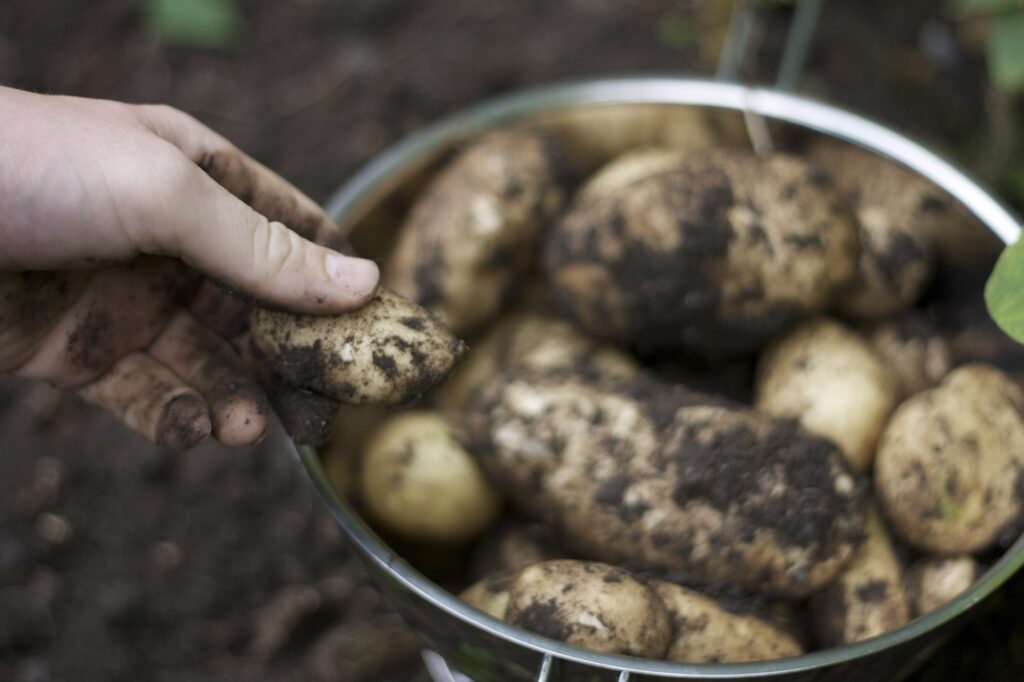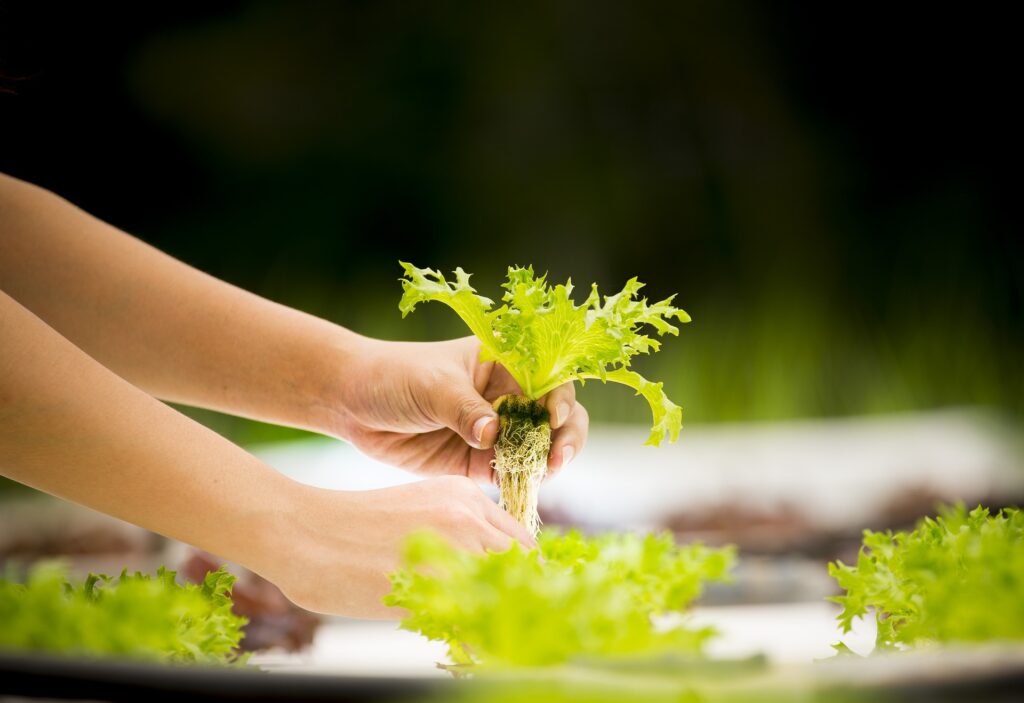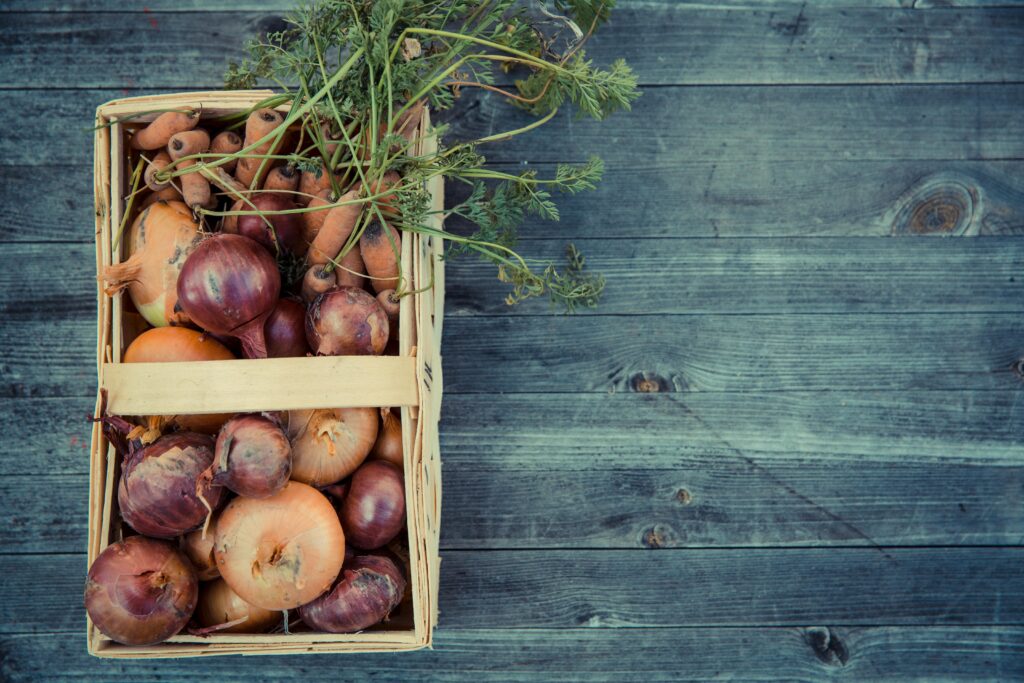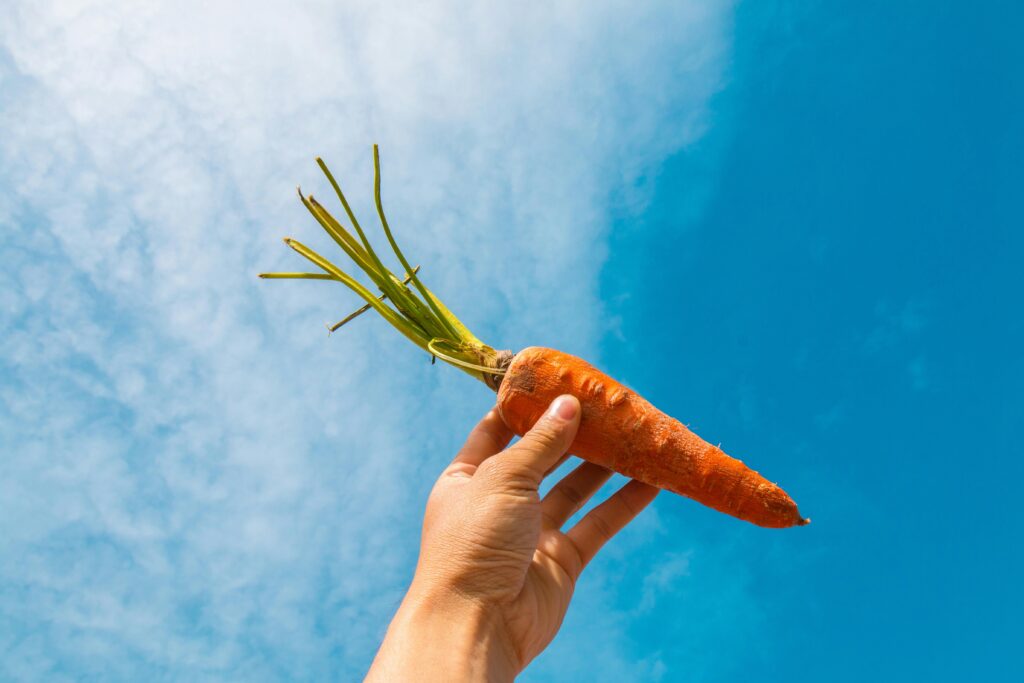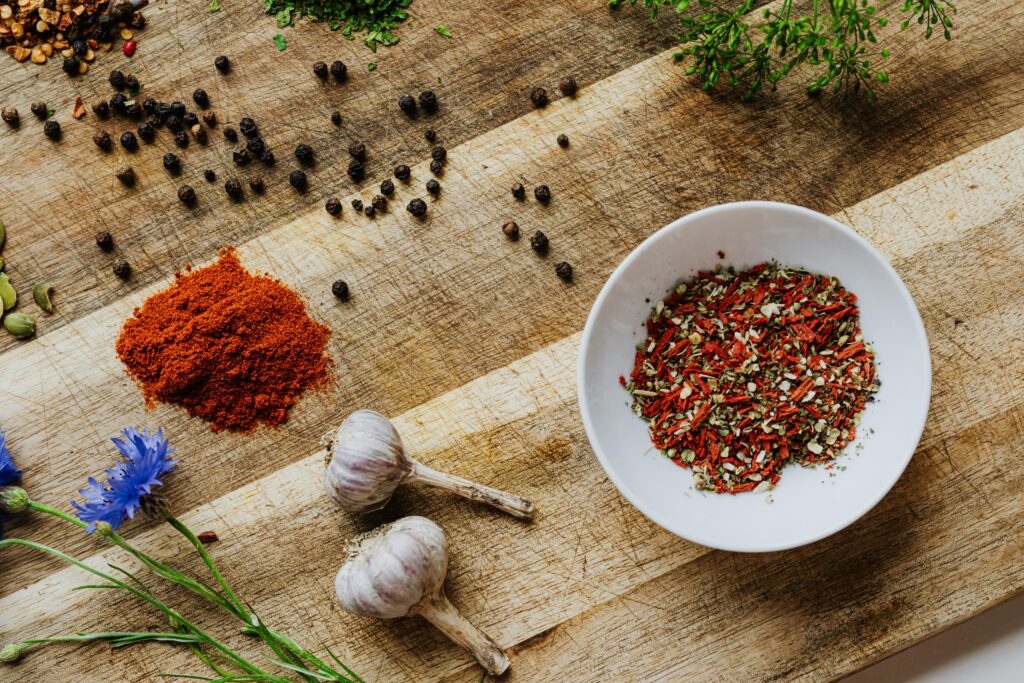Table of Contents
How to Grow Potatoes in a Container: Introduction
Learning how to grow potatoes in a container is not only a fun and rewarding gardening project but also an excellent way for those with limited space to enjoy homegrown produce. The key to successful container potato gardening is understanding the right conditions and steps to take. This method provides numerous advantages, including the ease of managing pests, diseases, and weeds, as well as the ability to grow potatoes in regions with unsuitable soil. Throughout this blog, we’ll guide you through each step of the process, ensuring you have all the information needed to start your container potato garden. From selecting the right container and soil to harvest and storage, we’ll cover it all, making it simple and straightforward.
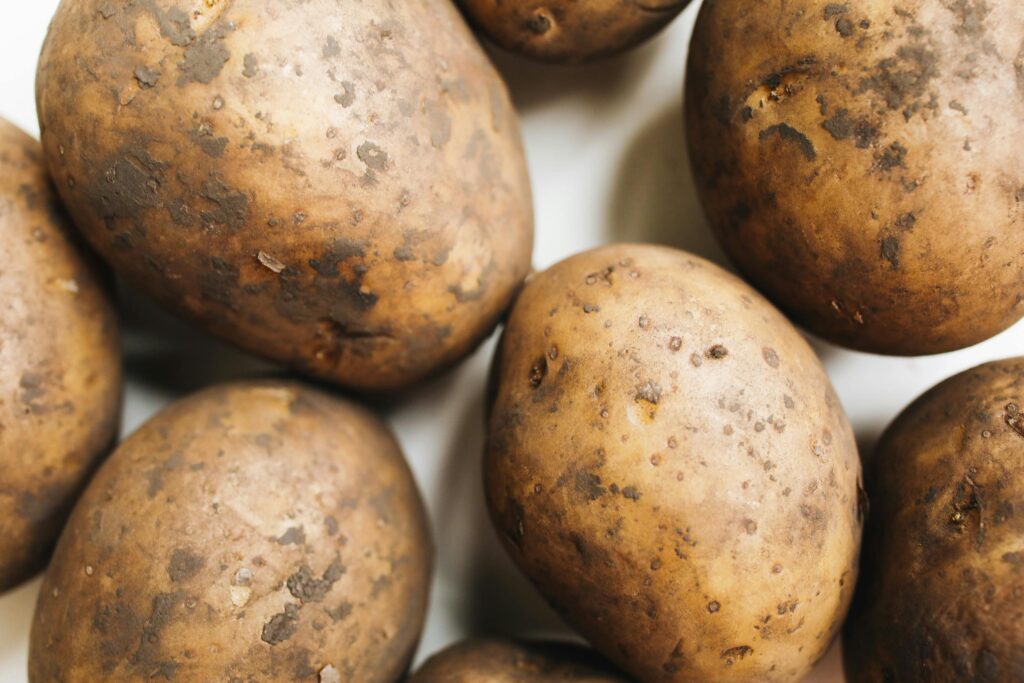
Health Benefits of Potatoes
- Nutrient-Rich: Potatoes are a good source of Vitamins C and B6, which are vital for immune function, energy production, and brain health.
- Antioxidant Properties: They contain antioxidants that fight free radicals, reducing the risk of chronic diseases.
- Fiber Content: The skin of potatoes contains fiber, which promotes digestive health and helps in weight management.
- Potassium Source: High in potassium, potatoes support heart health by regulating blood pressure.
- Gluten-Free: An excellent food choice for people with gluten intolerance or celiac disease.
- Versatile and Satisfying: Potatoes are incredibly versatile, fitting into various diets and culinary preferences while providing a satisfying feeling that helps with hunger management.
Choosing the Right Container
When it comes to how to grow potatoes in a container, the first step is selecting an appropriate container. Potatoes are versatile and can thrive in various containers, provided they have enough space to grow and adequate drainage. Here are key considerations for choosing your container:
- Size Matters: Opt for a container that is at least 12-15 inches deep and wide. This size allows sufficient room for the roots to grow and tubers to develop. Larger containers can hold more plants but remember, each plant needs room to grow.
- Drainage is Crucial: Ensure your container has good drainage to prevent waterlogging, which can lead to root rot. If your container doesn’t have holes, drill several at the bottom.
- Material Choices: Containers can be made from plastic, fabric, wood, or metal. Fabric pots are excellent for aeration and preventing overheating in summer. Wooden crates or barrels add a rustic charm but ensure they haven’t been treated with chemicals. Plastic containers are lightweight and affordable, while metal pots are durable but can get hot, affecting root growth.
- Consider Mobility: If you plan to move your container to chase the sun or protect it from harsh weather, choose a container with wheels or one that is light enough to move.
Selecting Potato Varieties
Choosing the right variety is a crucial aspect of learning how to grow potatoes in a container. While most potato varieties can be grown in containers, some are better suited than others:
- Early Varieties: These potatoes mature quickly, in about 10-12 weeks. Varieties like ‘Red Duke of York’ and ‘Swift’ are excellent choices for container gardening, providing an early harvest.
- Mid-Season Varieties: These require a bit more time, about 13-16 weeks, to mature. ‘Yukon Gold’ and ‘Charlotte’ are popular mid-season varieties known for their flavor and texture.
- Late Varieties: For a later harvest, opt for varieties that take 17-20 weeks to mature. ‘Russet’ and ‘Cara’ are great for their storage qualities and robust growth.
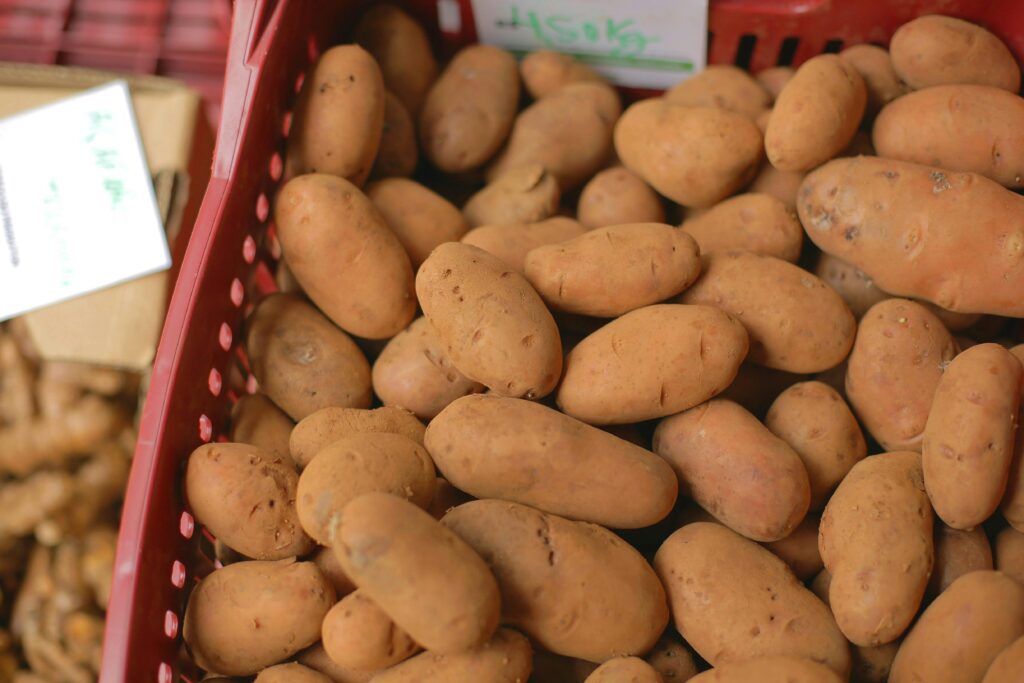
How to Grow Potatoes in a Container: The Preparation
After selecting your container, the next step in how to grow potatoes in a container is preparing it and the soil:
- Drainage Layer: Begin with a layer of gravel or broken pot shards at the bottom to enhance drainage.
- Soil Mix: Use a high-quality potting mix, lightened with compost and well-rotted manure to provide nutrients. Potatoes prefer slightly acidic soil, with a pH of 5.0 to 6.5.
- Adding Fertilizer: Mix in a slow-release fertilizer to give your potatoes a strong start. Alternatively, use a blend of bone meal and fish emulsion for organic gardening.
Planting Your Potatoes
Planting is a critical phase in how to grow potatoes in a container:
- Chitting: Start by Chitting your seed potatoes. Place them in a bright, cool spot to encourage sprouts to form.
- Planting Depth and Spacing: Plant seed potatoes about 4 inches deep, with sprouts facing up. If your container is large, you can plant multiple potatoes, but ensure they are spaced at least 12 inches apart.
- Covering: After planting, cover with 4 inches of soil. As the plants grow, continue to add more soil, leaving only the top few leaves exposed. This method, called ‘hilling’, encourages more tubers to form.
Caring for Your Container Potatoes
Caring for potatoes involves a few key steps:
- Watering: Keep the soil consistently moist but not waterlogged. Containers dry out faster than garden soil, so regular watering is crucial.
- Sunlight: Potatoes need at least 6 hours of sunlight daily. Position your container in a sunny spot.
- Feeding: Apply a balanced liquid fertilizer every 4-6 weeks to support growth.
Harvesting and Storing Potatoes
Successfully how to grow potatoes in a container culminates in the exciting phases of harvesting and storing your potatoes. This stage is crucial for enjoying the fruits of your labor throughout the year. Here’s a detailed guide to ensure you get the most out of your potato crop:
Harvesting Potatoes
- For early varieties, you can start harvesting when the plants begin to flower. This is typically a sign that small, new potatoes are ready.
- Maincrop varieties should be left in the container until the foliage turns yellow and dies back. This indicates that the potatoes have matured and are ready for harvest.
- Use your hands or a soft tool to carefully dig through the soil. Be gentle to avoid bruising or damaging the potatoes.
- Harvest on a dry day to minimize soil sticking to the potatoes and to avoid damaging their skin.
- Not all potatoes will be the same size. You may find a mix of large, medium, and small potatoes.
- Small, new potatoes are excellent for salads and boiling, while larger ones are great for baking and roasting.
Curing Potatoes
- Curing toughens up the skin of the potatoes, extending their shelf life and improving their flavor.
- Lay out your harvested potatoes in a single layer in a cool, dark, and well-ventilated area.
- Avoid washing them before curing; soil clinging to the potatoes helps in the process.
- Let them cure for about 1-2 weeks.
Storing Potatoes
- Before storing, sort through your potatoes. Use any damaged or bruised ones first and only store healthy specimens.
- Store your cured potatoes in a dark, cool (about 45-50°F), and humid environment.
- Basements, cellars, or a dark pantry can provide suitable conditions.
- Ensure your storage area is well-ventilated. Lack of air circulation can lead to moisture buildup and rot.
- Use breathable storage containers like burlap sacks, paper bags, or wooden crates with holes for air flow.
- Avoid using airtight containers which can promote moisture accumulation and cause the potatoes to spoil.
Tips for Long-Term Storage
- Periodically check on your stored potatoes. Remove any that show signs of spoiling to prevent the spread of rot.
- Prevent greening and the production of solanine, a toxic compound, by keeping potatoes away from light.
- While it’s a common practice, storing potatoes and onions together can accelerate spoilage due to the gases they emit.
Utilizing Your Harvest
- Enjoy the potatoes that aren’t suitable for long-term storage by incorporating them into your meals shortly after harvest.
- Consider sharing your surplus with friends, family, or local food banks. Fresh, home-grown potatoes are a delightful gift.
Troubleshooting Common Problems
Growing potatoes in containers can sometimes encounter issues. Here’s how to identify and address some common problems:
- Pests: Potatoes can attract various pests, including Colorado potato beetles, aphids, and slugs.
- Colorado Potato Beetles: Look for yellow eggs on the underside of leaves. Remove them by hand and use organic pesticides if necessary.
- Aphids: These small pests can be washed off with a strong stream of water or treated with neem oil.
- Slugs: Set up beer traps or use diatomaceous earth around your containers to keep slugs at bay.
- Diseases: Fungal diseases like blight and scab can affect potatoes.
- Early Blight: Characterized by dark spots on leaves. Improve air circulation and avoid overhead watering to prevent its spread.
- Potato Scab: Causes rough patches on the potato skin. Maintain the soil pH around 5.5 to prevent scab.
- Watering Issues: Incorrect watering can lead to problems such as root rot or dry, undeveloped tubers.
- Overwatering: Leads to waterlogged soil and root rot. Ensure your container has good drainage and adjust watering according to weather conditions.
- Underwatering: Can cause the potatoes to become dry and small. Keep the soil consistently moist, especially during dry spells.
- Sunlight and Temperature: Potatoes need at least 6 hours of sunlight to develop properly. Too much heat, however, can be detrimental.
- Lack of Sunlight: Can lead to leggy plants and small tubers. Move your containers to a sunnier location if possible.
- Excessive Heat: During very hot weather, provide some shade during the hottest part of the day to prevent overheating.
Addressing these common issues promptly can help ensure a healthy and productive potato crop from your containers. Regular monitoring and adopting preventative measures can significantly reduce the risk of pests and diseases, leading to a bountiful harvest.
Transform Your Kitchen Scraps: 2 Methods to Plant a Sprouted Sweet Potato and Watch It Thrive
How to Grow Potatoes in a Container: The Conclusion
The journey of learning how to grow potatoes in a container is filled with both excitement and anticipation. From selecting the right container that fits your space to harvesting the fruits of your labor, each step brings its own set of rewards and challenges. As we’ve navigated through the process together, from the initial setup and choosing the right potato varieties to the crucial care tips and troubleshooting common problems, it’s clear that container gardening opens up a world of possibilities for growing your own food, regardless of the size of your outdoor space.
Embracing container gardening for potatoes not only offers the satisfaction of growing your own produce but also contributes to a sustainable lifestyle, minimizing waste and maximizing resources. The tips and tricks shared in this guide are designed to empower you, the aspiring gardener, with the knowledge and confidence to start your container potato garden. Embrace the joy of container gardening as a way to bring fresh, homegrown potatoes to your table. Remember, patience and attention to the needs of your plants are key to a successful harvest.
As you venture into the world of container gardening, let your curiosity and passion for growing guide you. The experience of harvesting your first potato is incomparable, offering a tangible connection to the food you consume. May your container potato garden thrive, providing you with plentiful harvests and the joy of gardening, no matter where you call home.

Frequently Asked Questions
How often should I water my container potatoes?
Container potatoes require consistent moisture. Water them when the top inch of soil feels dry, typically every few days during hot weather. Ensure adequate drainage to prevent waterlogging.
Can I grow potatoes in containers indoors?
Yes, you can grow potatoes indoors if you have a sunny spot that receives at least 6 hours of direct sunlight daily. Use grow lights if natural sunlight is insufficient.
What is the best soil for growing potatoes in containers?
The best soil is a well-draining potting mix amended with compost and well-rotted manure. Potatoes prefer slightly acidic soil with a pH of 5.0 to 6.5.
How many potatoes can I plant in a container?
This depends on the size of your container. A standard rule is one potato plant per 12-15 inches of container diameter.
When is the best time to plant potatoes in containers?
The best time is early spring, after the risk of frost has passed. For a continuous harvest, plant successive crops every 2-3 weeks.

